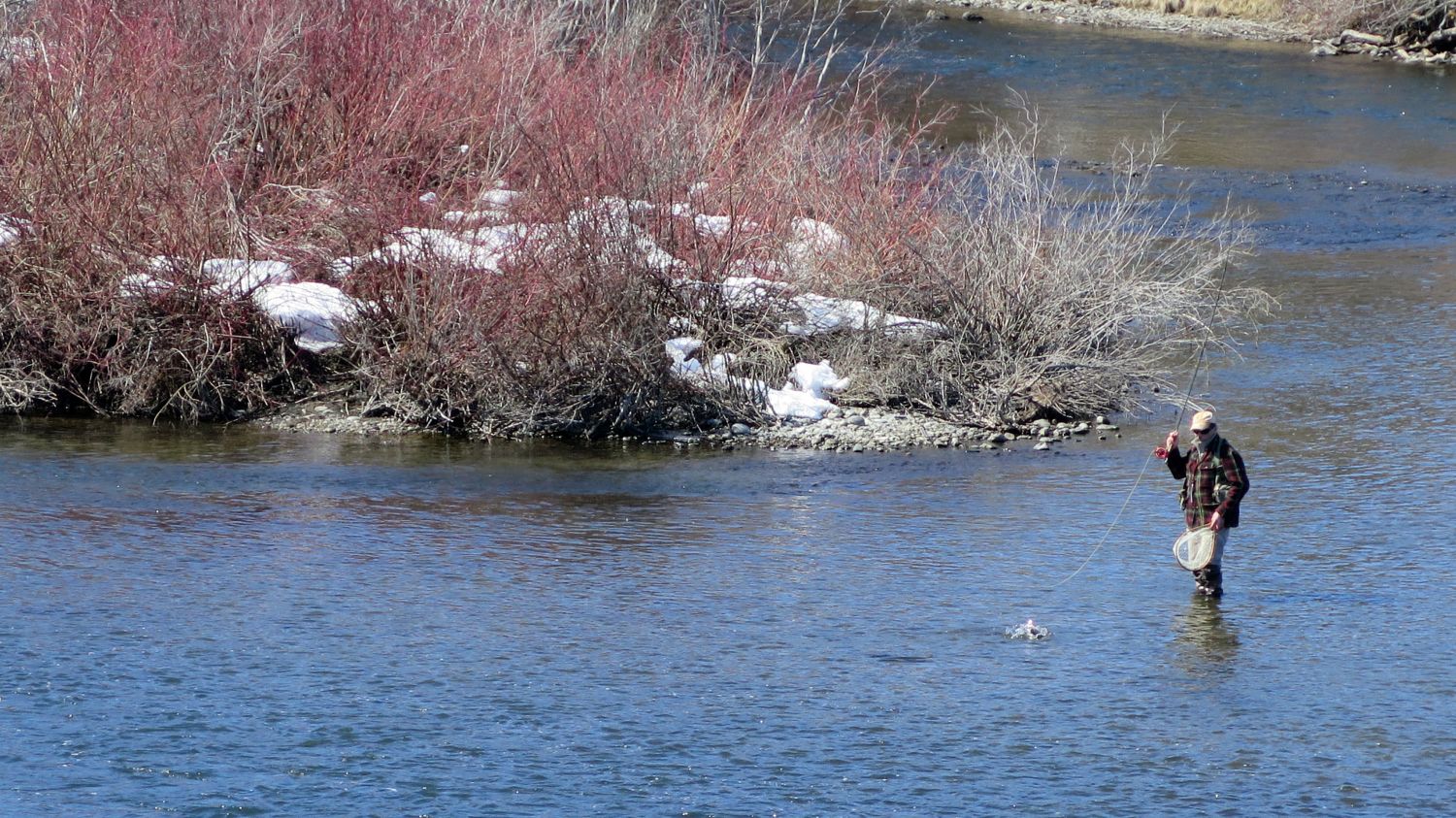Thus far in 2016, fishing seems to be mostly about adjustment.

In contrast to last year at this time when all things pertaining to weather, water, and hatches seemed to be in perfect alignment, the Henry’s Fork has been reluctant to cooperate with the expectations that typically exist at the official arrival of spring.
In a year when snow and ice restricted access to the water until March on the lower river, it is impossible to resist looking back on 2015 when spring-like weather put everything into motion by early February.
Much of the adjustment has been mental as winter weary anglers restlessly await change in a weather pattern that on most days has discouraged the idea of being on the water with a fly rod.
With snow continuing to accumulate in the high country, I have not even considered driving to Island Park where I had already spent a half dozen days on Last Chance Run by this time last year.
 With most of the snow now gone below Ashton, there have been a handful of days that provided minor surface activity with midges. However, I have yet to tie on a Baetis and nymphs and streamers continue to be the most consistently productive means of attracting trout.
With most of the snow now gone below Ashton, there have been a handful of days that provided minor surface activity with midges. However, I have yet to tie on a Baetis and nymphs and streamers continue to be the most consistently productive means of attracting trout. It is certainly possible that the delayed arrival of significant dry fly opportunity can be attributed to some of the lowest flows we have seen in several years.
Alterations of habitat associated with unusually low water are most prominent in certain areas along the river’s edge that are now either dry or too shallow to accommodate trout that would typically be utilizing these places where surface activity is quite reliable in most years. Finding where these fish have relocated has occupied far more of my fishing time than I would prefer, and in some instances I have yet to solve the problem.
What I am finding, however, is that trout are not as well distributed as they would normally be at this time of year.

Inadequate depth is a logical explanation for weaker fish numbers in what has traditionally been considered prime holding water. With no significant vegetation to offer concealment, trout generally avoid open water less than knee deep. Even a few more inches of depth in the river would reduce the advantage held by Bald Eagles and other predators at this time.
Cold water temperature not only affects insect activity but the trout as well, and low water amplifies this problematic feature.
Sparse or nonexistent hatches are the rule on bright days when the air is cold enough to form ice in the rod guides. Insects that average no larger than size 20 simply will not justify the exertion required to feed on the surface in deeper water without a fairly heavy density of this miniature food source.
While trout will be found concentrated in deeper runs and pools, both nymphs and streamers are required to be smaller and lighter in weight than what would usually be associated with this point in the year. Adding to the adjustment in fly sizes is a longer and finer leader made necessary by exceptional water clarity that will last until spring runoff finally kicks in.

Summarizing the situation right now is really quite simple. With snow continuing to arrive at elevations above 5,000 feet on a weekly basis, we are dealing with winter conditions on most of the Henry’s Fork at the beginning of the fourth month of the New Year.
Although exceptionally low flow certainly carries its share of concerns, most of what I have experienced thus far has to do with physical comfort and the disruption of what has come to be expected with the arrival of April. Rather than being poor, however, fishing is actually just different, and there have been some very satisfying days on the water thus far.
Now, it is just a waiting game for more pleasant weather that must eventually arrive at some point. The hatches will come and the trout will rise as winter finally releases its icy grip on Henry’s Fork country. Just when is the question.


Leave a Reply